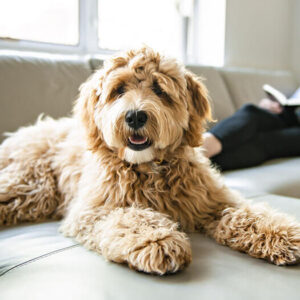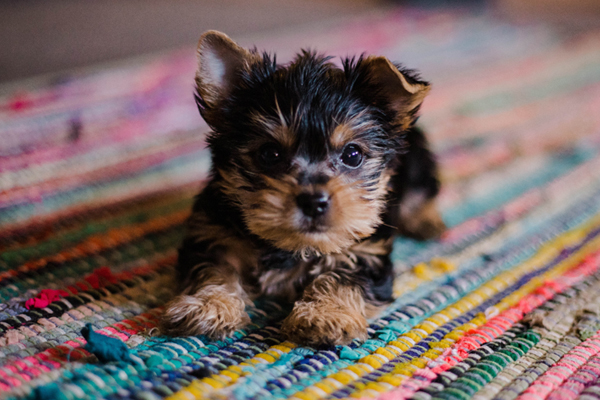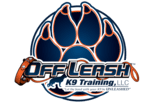House Training 101: A Complete Guide To Potty Training Your Puppy
House training 101 is all about helping your puppy learn proper potty habits. In this complete guide to potty training your puppy, we’ll cover the best methods, tips, and strategies to make the process smooth and successful.
House training roots back to our inherent desire to live in clean environments and maintain order. The practice has evolved significantly, from archaic methods to scientifically backed, compassionate techniques. With tools like crate training and positive reinforcement, the arduous task of potty training has become manageable, even enjoyable, for many pet owners.

House Training 101: A Complete Guide to Potty Training Your Puppy
House training your new puppy can seem challenging, but it doesn’t have to be. Establishing a regular routine is a crucial first step. Puppies thrive on consistency and knowing when they will eat, play, and go outside aids in setting expectations. Pick designated potty spots and stick to them. Remember, patience and positivity go a long way in helping your puppy learn.
Start by taking your puppy outside frequently. This includes first thing in the morning, after meals, and before bedtime. Puppies have small bladders and need frequent potty breaks. Recognize signs they need to go, such as sniffing or circling. Using a leash can help guide them to the right spot.
If your puppy has an accident inside, clean it up immediately to prevent repeat behavior in the same spot. Avoid using cleaners that contain ammonia, as they can smell like urine. Enzyme-based cleaners are the best option. These break down the odors completely. Always remember to praise your puppy when they go outside successfully.
Using a crate can be a helpful tool in house training. Dogs naturally avoid soiling their sleeping areas. Ensure the crate is the right size, allowing your puppy to stand up and turn around comfortably. If your puppy is crated for extended periods, make sure they get plenty of regular exercise and attention outside of the crate.
The Importance of Proper House Training
Proper house training is fundamental to maintaining a harmonious home environment with your new puppy. It helps prevent undesirable habits, reducing stress for both you and your pet. Effective training also strengthens the bond between the owner and the puppy. Consistent house training can even enhance your puppy’s overall behavior. Establishing rules early on sets a positive tone for future learning.
A well-trained puppy contributes to cleaner living spaces. This reduces the risk of health issues caused by lingering messes. Using house training methods ensures your puppy learns where and when it’s appropriate to relieve themselves. These methods create a predictable routine. Clean homes are not only more pleasant but also safer for everyone involved.
House training also provides mental stimulation for your puppy. Learning new skills keeps their minds active and engaged. This is particularly important for young dogs, who have an eager-to-learn attitude. Each successful trip outside is a small victory. This, in turn, encourages a happier and more confident pet.
Proper house training fosters trust and respect. Your puppy learns to trust you as a reliable leader. In following your guidance, they respect the boundaries you’ve set. This mutual understanding lays the groundwork for future training. It’s a critical step in raising a well-behaved dog.
Necessary Equipment for Efficient Puppy Potty Training
Equipping yourself with the right tools makes puppy potty training more manageable. A sturdy crate is essential for creating a safe and defined area for your pup. The crate should be comfortable, offering enough room for your puppy to stand and turn around. A good-quality leash and collar are also crucial. These help you guide your puppy to their designated potty spot outside.
Having a supply of puppy pads can be invaluable, especially during the initial training stages. Puppy pads are useful when outdoor training is not immediately feasible. Place them strategically around the house. Additionally, using enzyme-based cleaners is vital for cleaning up accidents. These products break down odors, preventing your puppy from returning to the same spot.
Positive reinforcement tools such as treats and toys can accelerate the training process. Rewarding your puppy for correctly going potty outside encourages repeated good behavior. Timing the reward immediately after the desired action is important. You might also install a bell near the door. Teaching your puppy to ring the bell when they need to go outside is another helpful trick.
Keeping a schedule is easier with a dedicated training journal. Documenting your puppy’s feeding and potty times can help establish a routine. This journal can become a great reference as you identify your puppy’s habits. The right set of tools combined with a structured approach leads to successful house training. Remember, patience and consistency are key.
Understanding Your Puppy’s Body Language for Successful House Training
Recognizing your puppy’s body language is crucial for effective house training. Puppies often exhibit specific signs when they need to go out, such as sniffing the ground or circling. Watching for these cues can help you act quickly and take your puppy outside. Noticing these behaviors early on can prevent indoor accidents. Being attentive to your puppy’s needs fosters better communication between you and your pet.
One common signal is restlessness or sudden movement to the door. If your puppy seems agitated or barks out of nowhere, it might be a sign they need a potty break. Keep an eye on their routine, especially after eating, drinking, or waking up. Most of the time, puppies will show these signs consistently. This allows you to anticipate their needs effectively.
Pay close attention to your puppy’s tail and ears as well. A tense posture with a raised tail might indicate urgency. Similarly, ears pointing forward or backward can be signs of discomfort or a need to relieve themselves. These subtle cues are easy to miss but critical for timely intervention. A quick response reinforces proper behavior.
Using a potty command, like “go potty,” can also be helpful. Repeat this phrase every time you take your puppy outside. Your puppy will start associating the command with the action, making it easier for them to understand what’s expected. Consistent use of commands speeds up the training process. Over time, your puppy will respond more promptly to your signals.
Training sessions offer an excellent opportunity to observe your puppy’s behavior closely. Use treats to reward them when they successfully go outside. Positive reinforcement helps them associate going outside with a pleasant experience. Keeping a close eye on their body language during these sessions can help identify their needs better. This relationship-building exercise will make future training more seamless.
Understanding your puppy’s body language takes time and patience. Each puppy is unique and may display different signals. Take notes of their individual tendencies and adjust your approach accordingly. Effective communication leads to successful house training. With attention and care, your puppy will soon learn the right behaviors.
Approaches to Successful Potty Training: Crate Training, and Scheduled Feeding
Crate training is a popular and effective approach to potty training a puppy. The crate serves as a safe space, helping your puppy learn to control their bladder. Puppies naturally avoid soiling their sleeping area, making the crate a great tool. Ensure the crate is comfortable and sized appropriately. Gradually increase the time your puppy spends in the crate as they grow more accustomed to it.
Scheduled feeding goes hand-in-hand with crate training to create a structured routine. By feeding your puppy at consistent times each day, you can predict when they will need to go outside. Typically, puppies will need to relieve themselves within 15-30 minutes of eating. This makes it easier to plan potty breaks. Routine feeding not only aids in potty training but also promotes better digestion and overall health.
Combining crate training with scheduled feeding streamlines the potty training process. Having a consistent schedule minimizes accidents and confusion for your puppy. This approach reinforces good habits. Over time, your puppy will understand the routine and follow it more reliably. Keep track of feeding and potty times in a journal for a clear pattern.
Positive reinforcement is crucial when using these methods. Reward your puppy with treats or praise each time they successfully go outside. This encourages them to associate going potty in the right place with positive outcomes. Avoid punishment for accidents as it can create fear and confusion. Consistency and patience are the keys to successful training.
Creating a schedule involves more than just feeding and potty breaks. Factor in playtime, training sessions, and naps. Puppies thrive on structure and predictability. Use a simple
- feeding schedule
- potty schedule
- crate schedule
to reinforce the routine further. Investing time in these approaches will result in a well-trained and happy puppy.
Dealing with Accidents: Steps for a Therapeutic Approach
Accidents are a normal part of the potty training process, but handling them calmly can make a significant difference. If your puppy has an accident, avoid scolding or punishing them. Dogs learn best through positive reinforcement and may become fearful if reprimanded. Instead, quickly clean up the mess using an enzyme-based cleaner. This helps eliminate any lingering odor that might attract your puppy to the same spot again.
Timing is crucial when addressing accidents. If you catch your puppy in the act, calmly interrupt them and take them outside immediately. Praise them if they finish their business outside. Consistency reinforces the idea that outside is the correct place to go. Make sure to take them to the same spot each time.
Creating a consistent routine can also help minimize accidents. Puppies thrive on schedules because they learn what to expect throughout the day. Take your puppy out at regular intervals, such as after meals and naps. Keep a close eye on their behavior for signs they need to go. This careful observation can prevent many accidents.
Reward your puppy each time they go potty outside. This can include verbal praise, a treat, or a quick play session. Consistently pairing a positive outcome with the desired behavior helps solidify the habit. This positive focus helps your puppy feel more secure and encourages them to continue learning. Remember, patience is critical during this process.
In some cases, you may need to seek guidance from a professional trainer. If accidents persist despite your efforts, a trainer can offer tailored advice. They can help you identify any underlying issues or recommend additional techniques. Investing in professional help can make a substantial difference. It’s important to address problems early to ensure long-term success.

Frequently Asked Questions
House training your puppy can be a challenging yet rewarding task. Here are some frequently asked questions to guide you through the process and help ensure success.
1. How long does it typically take to house train a puppy?
The time it takes to house train a puppy can vary. Generally, it takes about 4 to 6 months for most puppies to be fully trained, although some may learn in as little as a few weeks.
Puppy breed, consistency of training, and individual temperament all influence the duration. Consistency is key; frequent trips outside and positive reinforcement will speed up the process.
2. What should I do if my puppy has an accident inside?
If your puppy has an accident inside, clean it up immediately using an enzyme-based cleaner. This type of cleaner will remove any lingering odors that might attract your puppy back to the same spot.
Avoid punishing your puppy for accidents. Instead, focus on reinforcing positive behavior when they go potty outside. Guide them gently and use rewards like treats or praise.
3. How can I tell when my puppy needs to go outside?
Puppies often show signs such as sniffing around, circling, or becoming restless when they need to go out. Paying attention to these cues helps you act quickly and avoid accidents.
Establishing a consistent routine also aids in predicting when they need bathroom breaks, especially after meals and naps. With time, you’ll become attuned to their signals.
4. Is crate training effective for house training puppies?
Yes, crate training is highly effective for house training puppies. It helps establish boundaries and teaches them bladder control since dogs naturally avoid soiling their sleeping area.
The crate should be comfortable but not too large; this encourages them not to soil it. Regularly taking them out of the crate for potty breaks reinforces good habits.
5. Can older dogs be successfully house trained?
Yes, older dogs can be successfully house trained with patience and consistency. The process might take longer compared to puppies but is entirely achievable with the right approach.
Create a routine similar to that used for puppies: regular potty breaks, consistent feeding schedules, and lots of positive reinforcement will help your older dog learn new habits efficiently.
Conclusion
House training your puppy requires patience, consistency, and the right approach. Understanding your puppy’s body language and establishing a regular routine are key components. Utilizing tools like crates and positive reinforcement accelerates the process, making it more effective.
Remember, accidents will happen, but staying calm and correcting mistakes gently will build a strong foundation. Over time, these efforts will lead to a well-trained, happy puppy that brings joy to your home. Keep your eye on the goal and stay committed to the journey.

